The moment I played that first power-chord through the DIY guitar amp I’d put together, the room shook with a sound so primal, so thunderous, it electrified every corner of my being. But it didn’t happen overnight. My journey of delving into the complex world of guitar amp boards and intricate guitar amp schematics took over two decades, transforming a hobbyist into a sound enthusiast, a player into an aficionado.
Therein lies a potent allure that’s simply not replicated elsewhere. You might ask, is it possible for regular folks with a passion for all things guitar to embark on such a quest? The answer, my friends, is an emphatic yes. The tools are there; we just need to understand how to harness their power. And today, I invite you to journey with me into a world that lies just beneath the surface of every booming guitar note.
Picture this: Taking a seemingly incomprehensible piece of technology, dissecting it part by part, understanding each element’s role, then put it all back together and voilà – you’ve built your very own guitar amp board. The sheer joy of striking that first chord through your DIY guitar amp is something every guitar enthusiast should experience at least once. And I’m not just talking about assembling pre-made kits—though they’re a great starting point—I’m talking about building from the ground up, getting your hands dirty.
Engaging with guitar technology on this level offers you not just a deeper understanding, but the ability to custom-create your sound. There’s something incredibly empowering about flicking that switch, strumming those strings, and knowing that the sound roaring back at you is one you’ve crafted not only on your six-strings, but right at the heart of the beast—the amp board itself.
So strap in, folks. If your palms are itching to tweak, modify, customize, and bring your sonic dream to life—welcome home. This is the Ultimate Guide to Guitar Amp Boards: DIY Options, Parts, and Mods. Together, we’re going to explore the amplifying heart of your guitar’s voice, thread by thread, wire by wire, component by component. Ready? Let’s dive in.
Understanding the Components of Amp Boards
Exploring the Differences: Preamp Boards vs. Power Amp Modules
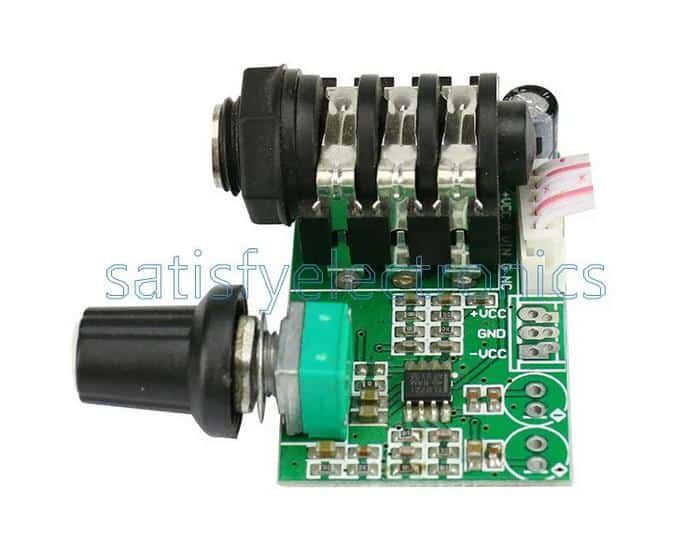
Moving right along our exploration of amp boards components, let’s delve into a crucial distinction within the heart of the amp board – the difference between preamp boards and power amp modules. Drawing from my lengthy understanding of instrument construction, I can illuminate how these contrasting pieces contribute individually to the overall sonic output.
A preamp board, as the name suggests, takes care of initial signal amplification. Its main task is to accept the very minute signal from your guitar and amplify it. This ensures that it’s strong enough to be processed further in the amplification chain. Thus, the preamp board primarily deals with your instrument’s volume. It is also the stage where tonal colouring, sculpting, and effects are typically applied, putting its relevance to your final sound at a high pitch. I’ve found that the selection of a preboost or preamp board can be central to tailoring my unique sound.
Then comes the power amp module. This works on the tonally managed and coloured signal sent out by the preamp board to further amplify it. It is chiefly responsible for driving the speaker, giving audibility to your speaker output. Here, the emphasis is less on subtlety and more on pure power, to push the signal out strong. That’s not to say it doesn’t impact your tone – various elements of the power amp module like the power tubes and output transformers can indeed leave their fingerprints on your tone.
In essence, the preamp boards and power amp modules work synchronously, each having distinct roles. Yet, these roles are interwoven and intertwined, culminating in the final tonal quality and audibility of your guitar sound. Improving your knowledge and understanding of the differences between these two components can contribute towards crafting your unique sound and reshaping your interaction with your favorite instrument.
But remember, this is only part of the picture, as there are other components of the amp board which we’ll dive into next – such as tube amp components. By gaining a complete understanding of these varied parts, we pave our path to building and customizing your own amp, creating a sound that is quintessentially you.
Dive into Tube Amp Components
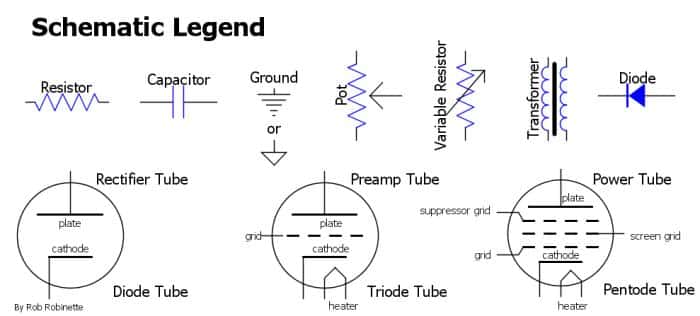
In our journey through the fascinating landscape of guitar amp boards, we now emerge into the realm of tube amp components. As a fervent admirer of vintage tones, I’ve immersed myself in learning and experimenting with diverse tube amps. The richness and warmth they impart to the sound are truly unparalleled, breathing life into chords and solos.
Tube amp components play a vital role on amp boards. Central to the amp’s performance, they are the very soul of vintage sound reproduction. By altering or swapping these components, you can reshape your audio environment and explore a universe of unconventional sounds.
The tube amp operates on the principle of vacuum tubes to amplify your guitar’s signal, with transformers providing impedance matching and voltage conversion. The preamp tubes are the first meeting point for your guitar’s signal, driving the power tubes which, in turn, drive the speaker. When a preamplifier tube amplifies the weak initial signal from your guitar, it’s the power tubes that do the heavy lifting, transforming the tamed lion into a roaring beast that lights up the speaker.
Elusive to many, tube amps generate softer clipping and rich harmonics which lend your music a warmer, fuller tone. They have the tremendous ability to amplify the intricacies in your guitar’s resonance, releasing powerful and well-rounded sounds as a pleasing result.
Understanding tube amps and their components isn’t just technical knowledge. It’s an art, a gateway to personalizing your musical output, and indeed, a passage to musical profundity. Varying the tube amp components can influence the depth, perception, and character of tones – a route many vintage sound lovers traverse with great enthusiasm.
Suffice to say, you can’t discuss amp boards without delving into the significance of tube amps. Their relevance is not merely an ode to the past, but an acknowledgment of their ongoing role to the present day, steadfast in the hearts of musicians who value the warm and nuanced play that these amps produce.
Next, let’s roll up our sleeves and venture into the heart of this discussion – building and customizing your own amp. As you will see, understanding these tube amp components is a stepping stone towards creating your unique sound wave. Whether you’re a DIY enthusiast or simply committed to refining your audio quality, knowing these components will dramatically elevate your engagement and result in the world of amp boards.
DIY: Build and Customize Your Own Amp
In-Depth Look at DIY Guitar Amp Kits
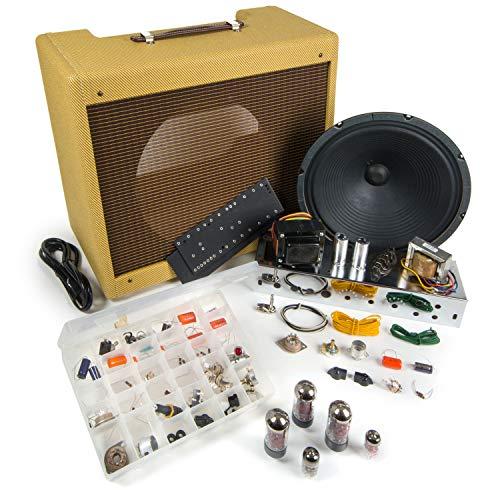
Stepping into the realm of DIY guitar amp kits is undeniably one of the most fascinating journeys you can embark on if you enjoy exploring the world of sound from the ground up. Each kit provides a unique opportunity to learn, understand, and appreciate the profound capability of each small component that contributes to the overall sound that is produced.
Having experimented with numerous DIY guitar amp kits over time, I can confidently attest to the diverse range of possibilities they offer and the immense satisfaction that comes with crafting your own sound. Each kit not only provides a rewarding hands-on experience but also results in a unique, tailor-made amp that is emblematic of your personal sound preference.
When pondering over how to build your own amp, the journey often begins with choosing a suitable amp kit based on your skill level and the sound you’re pining for. Some kits have an emphasis on tone, others on volume, and some even feature a blend of both. It’s all about what you’re aiming to achieve with your instrument.
As you delve into the details, you’ll encounter an array of components that collectively form the lifeblood of the amp. Resistors, capacitors, transformers, tubes – while the names might seem intimidating initially, each component has a specific role to play in the amp’s sound production. By constructing these pieces yourself, you’ll gain a profound understanding of how they interact and contribute to your guitar’s overall sound.
There’s a certain kind of magic brewing when you solder the last bit of circuitry, plug in your guitar, and hear it ring out with the sound that is uniquely yours. The entire process of building your amp from scratch fortifies a connection between you and your instrument that is indescribable.
The relevance of DIY guitar amp kits can’t be emphasized enough in our journey of enhancing our relationship with music. By acquiring the ability to alter and regulate your own sound, you extend your musical vocabulary and can respond artistically to the subtlest of nuances in your pieces. The DIY process also facilitates a better understanding of repairs and maintenance, leading to improved longevity of your gear and saving on repair costs in the long run.
Retrospecting my journey with DIY guitar amp kits, I’ve experienced innumerable roadblocks and triumphs that have enriched my understanding of sound and its production tremendously. Whether your reason to travel this path is inspired by curiosity, necessity, or the thrill of customization, the journey promises growth and a priceless personal accomplishment.
As we transition now into the realm of amp customization, you’ll find that your newfound knowledge and hands-on trial with DIY guitar amp kits can offer valuable insights. From swapping out resistors to replacing transformers or tweaking the preamp for just the right amount of grit, your deep-rooted understanding of the guitar amplifier’s inner workings will provide an unrivaled edge.
Customizing Your Amp: A Guide to Modifications
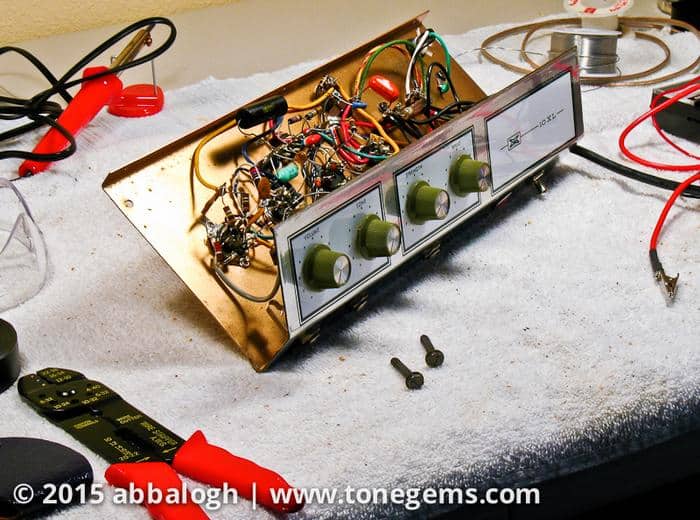
In the realm of guitar amp customization, I can personally attest to the unmeasurable depth of personal satisfaction and creative fulfillment that comes with completing an amp modification, or amp mod, as we colloquially refer to it. As a longtime member of guitar modding communities, the experience and expertise I’ve earned have greatly enhanced my journey into the realm of sound customization. Here, I intend to share what I’ve learned and mastered to guide you on customizing your amp for that unique sound you’ve always imagined.
The beauty of amp mods is that they offer the opportunity to personalize your sound. By way of customization, you can bring your unique musical expression to life, fine-tuning your amp to the minutest detail. To get started, understanding the basic components of your amp board is of utmost importance. Knowledge of your preamp, power amp, speaker parts and their connections can significantly ease the process of modification.
Consider beginning with simple upgrades for your amp mods – like switching out a preamp tube or a power tube. Even such minuscule mods can lead to significant tonal changes, adding more depth, warmth, or bite to your sound. Experimenting with different brands and models of tubes can also add nuance and diversity to your tonal palette. Always remember to respect the power and potential danger of high voltage electricity during these ventures.
Another worthy field for exploration lies within the realm of speaker customization. An impactful guitar amp customization can be executed by exchanging the original speaker of your amp with an aftermarket speaker that better aligns with your unique sound. Different speakers can bring out different frequencies, offering diverse sound textures. So, don’t hesitate to test out different speakers and discover the one that resonates the best with your musical vision.
For those of you interested in the DIY approach, there is a vast universe of guitar amp kits available, offering varying degrees of customization. These kits can help you understand the intricate dynamics of how different components interact in the creation of sound, further enlightening you on your path to amp modification.
On a slightly advanced note, the inclusion of effect units, be it distortion, delay, or reverb units, can greatly expand your sonic landscape. These units can be installed into your amp circuit itself or utilized as external units.
Every tweak and modification you make in this process is a step towards manifesting your unique sound. So, arm yourself with basic electronics understanding, a bit of courage, and the willingness to experiment. As you dive deeper into your guitar amp customization journey, don’t forget to document your process. Each modification is a learning experience, one that can be consistently enhanced by constant experimentation and observation.
As you familiarize yourself more with amp mods, I would also highly recommend joining the world of the guitar modding community. The insights, support, and challenges that this dynamic community contribute will both inspire and aid you in upscaling your journey even further. Remember, the process of guitar amp customization is just as rewarding as the final product. So, stay patient, stay dedicated, and most importantly, enjoy the journey to finding your unique sound.
Electric Guitar Effects and Pedals
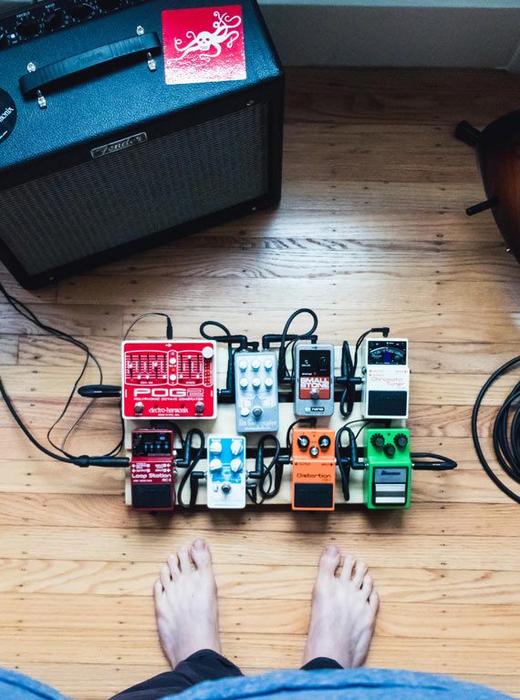
Guitar effects and pedals go hand in hand with the DIY world of amp boards. From my experience, getting your pedalboard setup just right can add another level of sophistication and personal touch to your guitar playing. Let’s explore further.
The heart of a great guitar sound often lies within customizing your amp, whether it’s a custom-built module or a modular setup. But in my years of research and design of stringed instruments, I’ve found that the most unique and distinct sounds often come through the use of guitar effects and pedals. Ever been mesmerized by the sheer range of sounds your favorite guitarist can produce? Discover the magic behind effects and pedals.
The study of guitar effects and pedals has always fascinated me. The right pedal can shape your sound in such a way that it carries your personal signature, that essence of ‘you’ that’s transmitted when you play. Imagine having a palette from which you can color your sound, add tone richness or alter dynamics, sometimes subtly, sometimes dramatically – that’s the power and creative potential a well-structured pedalboard setup offers.
For me, the fundamental starting point for building your guitar effects board is to understand your style and needs. The choices are vast, and a lot of it boils down to your personal preference. Do you want the raw, gritty power of an overdrive or distortion pedal, the echo-filled resonance of a reverb, the rhythmic shifts of a delay pedal, or the smooth coloration of a chorus effect? The options seem endless, but therein lies the enjoyment of experimenting and finding your unique sound.
Once you’ve determined the type of effects you want to incorporate into your setup, the layout of your pedalboard setup begins. Allow me to share a revelation from my own experience – the signal flow and placement of your pedals does matter. Proper placement can avoid issues with tone sucking or unwanted noise. A good rule of thumb is to position your tuner at the start, then drive pedals, modulation and time-based effects, and finally, your volume pedal.
Remember, building your guitar effects board is as much an art as it is a science. It’s good to play around and make adjustments – some of the greatest sounds have come from ‘breaking the rules’. So, don’t be afraid to experiment and find your unique pedal chain. Your sound, after all, is an extension of your artistic individuality.
In my journey, I’ve found that a well thought out pedalboard setup can improve my playing dynamics and push my creativity as a guitarist. The magic of the guitar effects and pedals lies in the infinite opportunities they present for shaping your sound and making it uniquely yours. It’s a journey of discovery, one that is exciting, challenging and immensely satisfying.
As we proceed towards further details about joining the world of guitar modding community in the upcoming section, remember: refining your sound with effects and pedals isn’t a destination. It’s a journey. One that takes us closer to finding our distinct musical persona, one pedal at a time.
Joining the World of Guitar Modding Community

Ever since my first encounter with a raw, untouched guitar amp board, I’ve been intrigued by how this seemingly mundane piece of equipment can contribute to creating soulful and iconic sounds. This fascination led me to explore the world of guitar modding and DIY, and along this journey, I discovered communities that not only shared my passion but also guided me to reach new heights in this craft.
Throughout this module, I’ll be sharing my insights about the ‘Where’ aspect of the 5Ws model, focusing on one of the most engaging and vibrant elements of the guitar amp modding universe. And who knows, could joining a guitar modding community be your next big leap? Let’s uncover the opportunities that lie in these vibrant online spaces.
My involvements with the guitar modding community span across a variety of platforms—online forums, Facebook groups, meetup events, and even mentorship programs. These platforms have not only offered expert guidance and encouragement but also challenged, motivated, and propelled me to innovate and improve continuously.
Whether you’re a professional luthier or simply a hobbyist, the world of the guitar modding community awaits you with many opportunities. For instance, you can immerse yourself into detailed discussions about the differences between preamp boards and power amp modules, or learn how you can customize your amp to fit your specific sound preferences.
Being an active participant in these guitar modding communities has enriched my lutherie journey. It is fascinating to discover the innumerable possibilities provided by guitar amp boards, and more so, it opens up a world where you can share your creations, build networks, get advice, celebrate triumphs, and find solutions for hurdles.
Undeniably, frequent interactions with fellow community members can drive your learning curve, giving you a hands-on approach to troubleshooting typical problems and discerning quality components. It often leads you to a place where you exchange raw ideas and discuss advancements in the field, which further broadens your horizons and furthers your interest in guitar amp boards.
Being part of these dynamic communities, I’ve had the privilege to work on unique and exciting projects like building an amp from scratch or modifying popular amp designs for a personal twist. And the feedback I’ve received—both kind and critical—has vastly improved my own work.
In my experience, joining the guitar modding community was a pivotal step in connecting theory to practice — a journey where online blueprints transformed into tangible guitar amplifiers. Yes, there were countless hours spent, trials and errors endured, but the satisfaction achieved is truly unparalleled. Here, you’ll find folks with the same interest, same doubts, same passion—all connected simply by our love for modding guitars.
In conclusion, the guitar modding community is a treasure trove of information and knowledge exchange. It’s a place for innovation, encouragement, celebration, and growth. So, I’d like to extend an invitation for you to explore this world, for it might just be the place where your guitar amp tinkering goes from a hobby to a passionate pursuit.
In the next sections of this guide, I will delve deeper into the ‘What’ and ‘How’ aspects—touching upon topics like electric guitar effects and pedals, and a comparative discussion on solid-state vs. tube amps. The journey into the world of guitar amp boards is long but rewarding, and I believe these communal spaces can empower you to write your own unique lutherie story.
Solid-state vs. Tube Amps: A Comparative Discussion
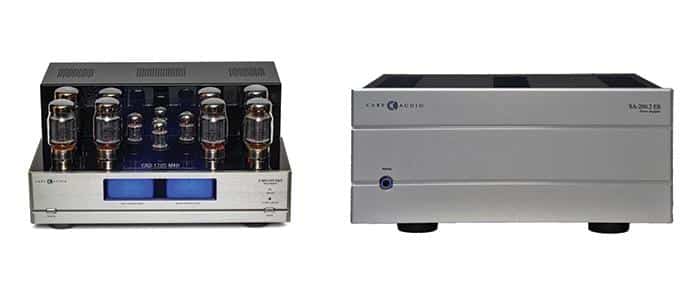
As we delve deeper into our comprehensive guide, a crucial aspect we need to tackle is the differences between solid-state and tube amps. As an electronics engineer by profession and a luthier by passion, I take this opportunity to unfold these differences with not only my understanding of the science behind it but also how I’ve witnessed these amps perform in a real-world scenario.
Perhaps you’ve reached that stage in your journey where you’re considering which type of guitar amplifier to settle for. Here’s where many get sidetracked. Solid-state or tube amps – what’s the real difference? Let’s journey into an insightful comparison that helps you make an informed choice.
Beginning with the tube amps, these classics have been making their mark ever since the inception of electric guitars. My experience with them has always been fascinating. The distinct tonal quality and warm, rich sound these amps provide have often left me in awe. What makes them unique are the tube amp components. Tubes are central in shaping the sound, as different tubes create different tonal characteristics. However, all this comes at a cost, as tubes must be periodically replaced and they can add a fair bit of weight to the amp.
On the other hand, we have the solid-state amps. With these, technology has taken over and replaced the glass tubes with semiconductor components. My exposure to these in the world of lutherie has revealed a myriad of advantages. Solid-state amps are reliable, lightweight, and portable making them suitable for the gigging musician. They require minimal maintenance and are more cost-effective than their tube counterparts. Nevertheless, their sound—their tone—might not be as warm or as rich as that of a tube amp.
The choice between the two isn’t about better or worse, it’s about personal preferences and specific needs. Over the years, I’ve interacted with guitar players who swear by the tube amps’ tone, while others appreciate the solid-state amps for their clean and precise sound. From a DIY perspective, both types offer ample room for customizations and modifications that can satisfy your unique sound preferences
As you continue on your path of understanding amplifiers, these comparisons will help guide you. It’s important to note though, that the best kind of amp for you is the one that meets your musical needs and aligns with your tonal desires. Having a good grasp of the differences between solid-state and tube amps is a crucial step in making that determination.
Inching forward into our guide, the next stage is about exploring the world of DIY guitar amp kits after having a good understanding of the essential components, differences between preamp boards vs power amp modules and solid-state vs tube amps. Ready to dive in?
FAQs
What is a Guitar Amp Board?
What are the DIY options for Guitar Amp Boards?
What parts do I need for a Guitar Amp Board?
What are the common Mods for Guitar Amp Boards?
Conclusion
Drawing from my many years as a luthier, my objective has always been to help others navigate the vast ocean of guitar amp boards and their interconnected aspects. I hope that the knowledge shared in this guide brings you closer to understanding, assembling, and personalizing your own board. Whether it’s discerning the differences between preamp boards and power amp modules, comprehending tube amp components, or exploring the world of DIY guitar amp kits, there’s an immense expanse to dive into.
Mastering the art of building a DIY guitar amp equips you with the ability to tailor your sound to your unique taste. In the realm of customizing your board, I hope we’ve pinpointed the myriad ways you can modify your amp, from changing out a fuse to delivering an entirely different voicing. By utilizing various parts and devising your own guitar amp schematics, your sonic potential is limitless.
Similarly, I trust that our discussions on electric guitar effects and pedals, solid-state vs. tube amps, and joining the modding community have shed light on the breadth of possibilities within the guitar universe. Remember, unlocking your guitar’s true potential starts with a deeper understanding of guitar amp boards and how you can morph them to encapsulate your sonic personality.
My aim was not just to provide a tutorial but to enlighten and inspire you in your journey. Fully grasping these elements opens up a world of creativity and allows you to constantly evolve and perfect your sound. So, lean into the world of DIY, be unafraid to experiment, and never stop creating. Happy strumming!